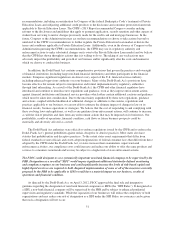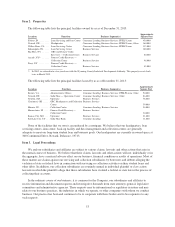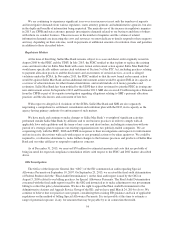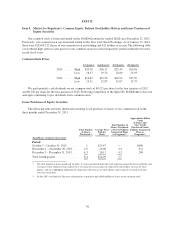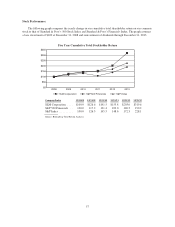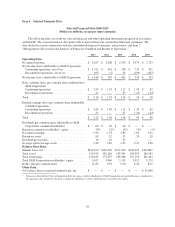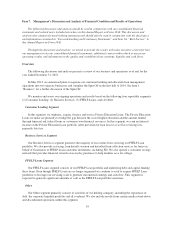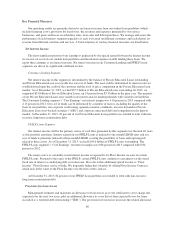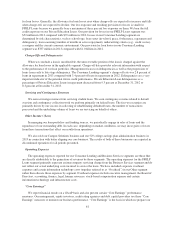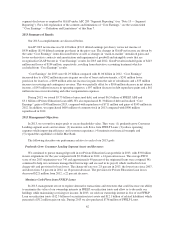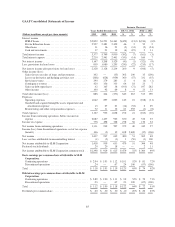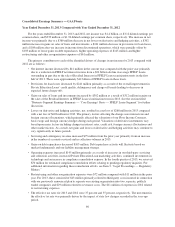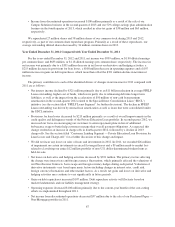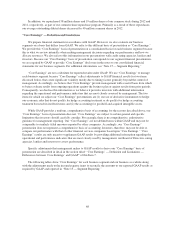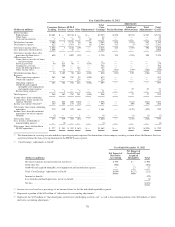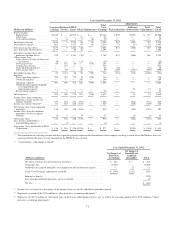Sallie Mae 2013 Annual Report Download - page 63
Download and view the complete annual report
Please find page 63 of the 2013 Sallie Mae annual report below. You can navigate through the pages in the report by either clicking on the pages listed below, or by using the keyword search tool below to find specific information within the annual report.for loan losses. Generally, the allowance for loan losses rises when charge-offs are expected to increase and falls
when charge-offs are expected to decline. Our loss exposure and resulting provision for losses is small for
FFELP Loans because we generally bear a maximum of three percent loss exposure on them. We bear the full
credit exposure on our Private Education Loans. Our provision for losses in our FFELP Loans segment was
$52 million in 2013 compared with $72 million in 2012. Losses in our Consumer Lending segment are
determined by risk characteristics, such as school type, loan status (in-school, grace, forbearance, repayment and
delinquency), loan seasoning (number of months in active repayment), underwriting criteria (e.g., credit scores),
a cosigner and the current economic environment. Our provision for loan losses in our Consumer Lending
segment was $787 million in 2013 compared with $1.0 billion in 2012.
Charge-Offs and Delinquencies
When we conclude a loan is uncollectible, the unrecoverable portion of the loan is charged against the
allowance for loan losses in the applicable segment. Charge-off data provides relevant information with respect
to the performance of our loan portfolios. Management focuses on delinquencies as well as the progression of
loans from early to late stage delinquency. The Consumer Lending segment’s charge-off rate was 2.8 percent of
loans in repayment in 2013 compared with 3.4 percent of loans in repayment in 2012. Delinquencies are a very
important indicator of the potential future credit performance. Private Education Loan delinquencies as a
percentage of Private Education Loans in repayment decreased from 9.3 percent at December 31, 2012 to
8.3 percent at December 31, 2013.
Servicing and Contingency Revenues
We earn servicing revenues from servicing student loans. We earn contingency revenue related to default
aversion and contingency collection work we perform primarily on federal loans. The fees we recognize are
primarily driven by our success in collecting or rehabilitating defaulted loans, the number of transactions
processed and the underlying volume of loans we are servicing on behalf of others.
Other Income / (Loss)
In managing our loan portfolios and funding sources, we periodically engage in sales of loans and the
repurchase of our outstanding debt. In each case, depending on market conditions, we may incur gains or losses
from these transactions that affect our results from operations.
We also sold our Campus Solutions business and our 529 college-savings plan administration business in
2013 in connection with better aligning our core business. The results of both of these businesses are reported in
discontinued operations for all periods presented.
Operating Expenses
The operating expenses reported for our Consumer Lending and Business Services segments are those that
are directly attributable to the generation of revenues by those segments. The operating expenses for the FFELP
Loans segment primarily represent an intercompany servicing charge from the Business Services segment and do
not reflect our actual underlying costs incurred to service the loans. We have included corporate overhead
expenses and certain information technology costs (together referred to as “Overhead”) in our Other segment
rather than allocate those expenses by segment. Overhead expenses include executive management, the Board of
Directors, accounting, finance, legal, human resources, stock-based compensation expense and certain
information technology and infrastructure costs.
“Core Earnings”
We report financial results on a GAAP basis and also present certain “Core Earnings” performance
measures. Our management, equity investors, credit rating agencies and debt capital providers use these “Core
Earnings” measures to monitor our business performance. “Core Earnings” is the basis in which we prepare our
61


